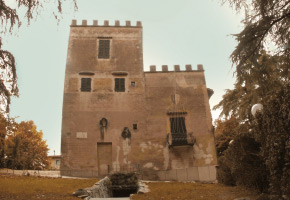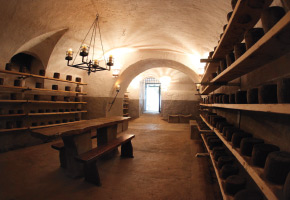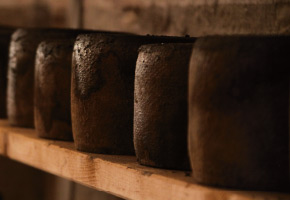
The origin of Palagiaccio historic farm dated back more than one thousand years ago. At the end of the first millenium, the noble Ubaldini family controlled a large part of the Apennines and during the Early Middle Ages they constructed a fortified garrison on the most rich soils of the Mugello valley. The important Ubaldini house reached the height of its prestige in the Late Middle Ages, when a member of the family, very near to the Pope, was named Bishop of Bologna. Thanks to the Bishop influence, the family got into the good graces of Frederick Barbarossa, the emperor. During that period Ubaldini family became so important in Florence, that Dante Alighieri itself wrote about its history in his masterpiece, the “Comedy”. With the end of feudalism Florence turned into a “Republic” and the Ubaldini family suffered several defeats, losing its

power: almost all of its properties passed into the hands of another historic family of Florence, the Medici.Over the years, Palagiaccio has been a witness for many historic events involving Florence, Tuscany and Italy. Statesmen and religious authorities found hospitality in the manor and the top of our armies used it as a headquarters more than once; in 1943, Palagiaccio was occupied by German army, but soon Allies soldiers conquered the manor, thus tuning it into their headquarters, because of its position, nearby the Gothic line. In the historic farm there are also cultural-artistic evidences. In the gentilitial chapel there are two important and noteworthy frescos: the first was painted by Andrea Del Sarto and it represents the visitation of the three Wise Man; the second belongs to Giotto’s school and it shows the flight into Egypt. Another important artistic evidence is located into the farm and it is related to the work of Chini family. This family of artists played a leading role in the italian Art Nouveau

and between the XIX and the XX century they dedicated themselves to relevant activities of restoration in the house of the farm. It is possible to admire some of their work such as for example particular large windows, refined fireplaces and pictorial decorations. Many properties around Florence underwent a change in their destination of use during the ascent of Medici, often becoming “Villa Medicea”, i.e. a country-house owned by the noble family; “Palagiaccio”, instead, is one of the few Ubaldini properties to preserve its structure and function: for this reason, over the centuries, Palagiaccio has kept intact the features of fortified farm, still in activity. For this reason, all the existing structures have been restored, honoring the efforts of people who originally had build it up. We are very proud of our history, but it carries also a lot of responsibilities: it is a duty to keep and promote an evidence of Florence and Tuscany culture and tradition.